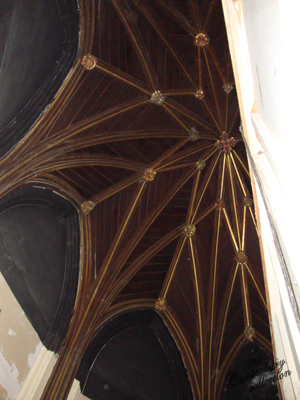~ ST. MARGARET'S CHURCH ~
ST. MARGARET'S STREET, CANTERBURY
Parish records available at the Canterbury Cathedral Archives 1648 - 1987
Possibly of the 12th Century
Was scheduled for demolition under the Holden Plan in 1945, then became a church for the deaf
Now the building is used as the Canterbury Tales
I'd like to thank the great staff of the Canterbury Tales for their hospitality and help on my last visit!!

"A view of St. Margaret's Church looking down St. Margaret's street towards Watling Street"
1480. The new market, near the church of St. Margaret, is paved with Folkestone stone. Ht
A photograph of the interior of St. Margaret's church c. 1905 (from my collection), and a view of the roof 2011
1838
Patron, The Archdeacon of Canterbury
Incumbent & Rector - C. N. BRACKENBURY, absent
Curate: J. METCALFE, Cathedral Yard
Churchwardens:
Edward HOMERSHAM, Hawks Lane
Robert SANKEY, Castle Street
Parish Clerk, vacant
Sexton, William THOMAS, Beer Cart Lane
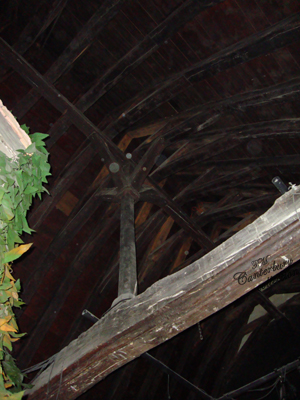 __
__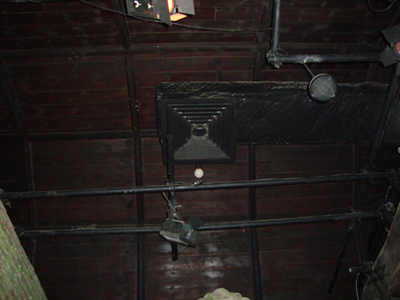
The roof views in St. Margaret's Church
Roger's (Dr. Minister of St. Margaret's Canterbury) Funeral Sermon in the Cathedral on Lieut. Col William Proude., 4to. 2s 6d 1633, *The Cathedral contains a handsome monument to his memory
Roger's Visitation Sermon at St. Margaret's, Canterbury, 4to. 1s 1633
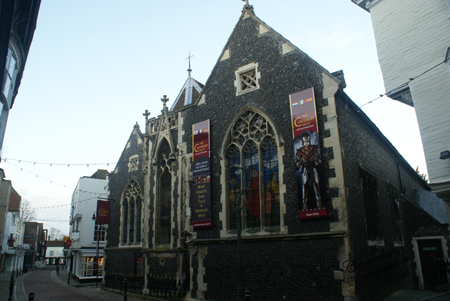
"The Church of St. Margaret is not architecturally noteworthy. It formerly consisted of a nave and chancel, with two aisles and two chancel-chapels. Somner says that the south chapel was dedicated to St. John, and the other to "Our Lady." The chapel of St. John was sliced off, and the east end of the church deformed, in order to straighten the street. The deformity was skilfully masked by the late Sir Gilbert Scott in the restoration carried out during the incumbency of the Rev. Edward H. Woodall. The wall of the south chancel was set back and an apse erected. The fine organ, which fills up the irregular space in the north aisle, was the gift of Mr. Woodall, who contributed most generously to the cost of the restoration, and devoted a very considerable sum to the adornment of the church.
The three aisles are separated by arcades of pointed arches on octagonal pillars. The small belfry-tower at the west end of the south aisle contains three bells, one dated 1599, and two by Hatch** dated 1625. The Baptistery under the tower has been recently paved with tiles. Reverent care has been devoted to the adornment of the church throughout; its decorations and fittings are in good taste, and several of the windows have been fitted with stained glass. The most imposing monument is that of Sir George Newman*, whose recumbent figure is carved in marble. He was a Judge of the Cinque Ports, and Commissary of Archbishops Whitgift, Bancroft, and Abbot. High up on the south wall, almost out of sight is a bust of John Watson, a worth citizen of Canterbury, who filled the several offices of Mayor, Chamberlain, and Sheriff, and in 1633 left property to be applied to the purchase of "good russett cloth gowns" to be given to the "most miserable, poorest, aged, blind, impotent and decrepit." The bust was originally in the chancel. The most notable of those whom we know to have had their last resting place in this church was William Somner, the learned author of the "Antiquities of Canterbury," to whose memory there is a small brass wall tablet. Somner wrote his great book during the reign of Charles I., and published it under the patronage of Archbishop Laud, in 1640. In that same year, as Batteley tells us, "a dismal storm did arise, which did shake and threaten with a final overthrow, the very foundation of the Church. The madness of the people did rage, and prevailed beyond resistance. The venerable Dean and Canons were turned out of their stalls, and whatsoever there was of beauty or decency in the Holy Place, was despoiled by the outrages of Sacrilege and Prophaneness." At such a time the work of so thorough a churchman as Somner was ill-timed, and "the best fate which the book or its author could at that time expect, was to lie hid, and to be sheltered under the security of being not regarded." Laud fell; the King fell; Cromwell passed away; the Commonwealth came to an end; and the Restoration found Somner still living, and his book unsold. In 1662 the publisher printed a new title page, bearing that year's date, and the work was sold. Somner thought of issuing a second edition, but died, in 1669, before he could carry out his design.
Among the noted parishioners of St. Margaret's was a certain John Winter, who, in 1470, left two tenements at the "Yren Cross," of the value of sixteen shillings annually, to pay the cost of a lamp to burn continually before the High Altar. The Iron Cross spoken of stood at the junction of Watling Street and St. Margaret's Street. The two houses left by John Winter were confiscated by the Crown when lamp burning before altars came to be considered superstitious; they were purchased by Alderman Watson, above referred to, and were left by him for the poor of the city. John Winter was buried in the chancel of the church. Leonard Cotton, Mayor in 1579, the founder of Cotton's Hospital, was also buried in St. Margaret's.
An Ecclesiastical Court, which was established in 1560, held its sittings in the Chapel of the Virgin. There the Archbishop of Canterbury held his quadrennial visitation of the clergy of this part of the diocese. In this church also till very recently, the Archdeacons of Canterbury have held their annual visitations. The living is a rectory; it was one of the many benefices attached to the Abbey of St. Augustine; but in 1271 it was transferred to the Poor Priests' Hospital. Since 1586, however, it has been in the gift of the Archdeacons of Canterbury.
Rambles Round Old Canterbury 1892 - John Winter MP for Canterbury 1449-1450, Commissioner for Kent 1458, Mayor of Canterbury 1459-60, his will was dated April 10, 1469, proved in the court of Canterbury....buried in St. Margaret's next to Thomas Forster. His father's name was Lawrence Winter, his wife's name was Jane.
*Sir George Newman died 1627
*Edward H. Woodall was living at 9 St. Margaret's Street in 1851, he was unmarried, and in his 30's, he was born in Yorkshire. (possibly Harrison)
**Joseph Hatch - For 37 or 38 years Joseph Hatch wrought mainly in his county, doing "a business which may fairly be described as enormous." That this epithet is no exaggeration may be understood by the fact that at this day there remain one hundred and fifty-five of his bells, and in five churches - Boughton Malherbe, Fordwich, High Halden, Waltham, and Wouldham are complete rings. He died in September, 1639, just escaping the death time of the Parliamentary war, "full of years, riches, and honour," as is demonstrated by his will, having, as it seems, already handed over the foundry to his nephew William Hatch, whose initials appear on many of his uncles bells. This Ulcombe foundry had to contend, not only against the near metropolis, but also against the near parish of Borden, where John Wilnar, a man not to be despised was settled. From him there are still seventy-two bells in Kentish Towers. "The Bells of England" by J.J. Raven 1906

Male figure, John Winter, Mayor of Canterbury, A.D. 1470. It is recorded in the inscription that he placed a lamp to burn before the altar of our Lord Jesus Christ. List of Incised Monumental Brasses in the Churches of Canterbury, John Brent 1879
(WILL) John WATSON esq. maior of the city of Canterbury - (Dat. 29 June 1645) - Buried in chancel of church of St. Margarett in said city as near unto my father there interred as may be - Legacies to poor of parishes of St. Andrew and St. Margaret. (etc.)
"The Rev. Thomas LEIGH d. 19 April, 1774; his wife, Jane, 2 Jan. 1766, and both were buried at St. Margaret's, Canterbury, near the altar." 1847
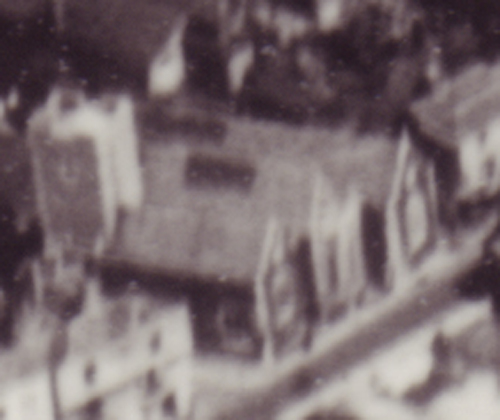
To allow room for carriages to turn into the Fountain Hotel, Sir Giles Gilbert Scott altered the east end of the church in the 1860's.
"In St. Margaret's was interred the learned William Somner, the historian, and native of this city; his epitaph on a mural monument of white marble is as follows: (see below). In this Church, also, is a handsome monument in commemoration of Sir George Newman, LL.D. Commissary to the Archbishops Whitgift, Bancroft, and Abbot, and Judge of the Cinque Ports almost thirty years: he died at the age of sixty-five, in 1637."
The Beauties of England and Wales, 1808
*In a copy of Bp. Kennet's Life of Mr. Somner, which now lies before me, I find the following MS. memorandum on his age, there said, by a certificate, to be 70 when he died, "March 30, 1669. A little before Lady-day 1626, Mr. Somner made a deposition in the Court of the Archdeacon of Canterbury, and then he gave his age to be almost 19 years; and soon after Lady-day 1626, in another deposition there, he is said to be above 19. S. Norris, Dep. Reg. ibm. & Auditor Eccliae Christi, Cant. 27 Aug. 1739, aet. a 67. He was buried, April 2, within the church of St. Margaret's Canterbury, where many of his ancestors lie interred, and over him was erected, by his widow, a marble monument upon which is engraved the following ingenious epitaph. (Gentlemen's Magazine - 1785

St. Margaret's Church c. 1910
____
The parishes of St. Margaret, St. Andrew and St. Mary Breadman were ecclesiastically united in 1888, the register dates from 1654.
William Somner, was born at Canterbury, according to the account given by his wife and son, March 30th, 1606; but according to the register of the parish of St. Margaret's, he was baptised there on November 5th, 1598. His father was a regular of the court of Canterbury under Sir Nathaniel Brent, who was then commissary. He was sent to the free-school of that city, where he acquired a competent knowledge of Latin. He was next placed as clerk to his father in the ecclesiastical courts of the diocese, and afterwards preferred to an office in the courts by archbishop Laud. His natural bent was to the study of antiquities, in which he was encouraged by Dr. Merie Casaubon, one of the prebendaries.
In 1640 he published "The Antiquities of Canterbury." 4to., a work which gained him considerable reputation, and which was afterwards reprinted and enlarged by Nicholas Batteley, fol., Lond., 1703. Somner's next production was an Appendix to the first part (all that was published) of Casaubon's Commentary "De Quatuor Linguis," 12 mo., Lond., 1650, showing the relation of the German with the Saxon language. In 1652 he added a most valuable Glossary to Sir Roger Twysden's "Decem Scriptores." He was now urged by his friends to make a Saxon Dictionary, but as this was a work which required time and great labour, it was necessary that he should have sufficient means of support while engaged upon it. Sir Henry Spelman had founded at Cambridge a lecture for "promoting the Saxon tongue, either by reading it publicly or by the editing of Saxon Manuscripts;" and this lecture being vacant in 1657, archbishop Usher recommended Somner to the then patron Roger Spelman, grandson of the founder. Accordingly Somner had the salary, and went on with the work, which was published at Oxford, in folio, in 1659.
A short time before the Restoration, Somner was imprisoned in the castle of Deal for endeavouring to procure signatures to a petition for a free parliament.
In 1660 he was made master of St. John's Hospital, in the suburbs of Canterbury, and about the same time auditor of Christ Church. In this year he published in quartro his "Treatise on Gavelkind," his last publication. He died March 30th, 1669.
He left behind him various manuscript collections, and two or three treatises, one of which "Of the Roman Ports and Forts in Kent," was published at Oxford, 8vo., 1693, by Brome. Another, "De Portu Iccio," translated into Latin by Mr. (afterwards bishop) Gibson, was published at Oxford, 8vo., 1694. To the former of these a Life of Somner is prefixed by White Kennet, afterwards bishop of Peterborough.
Somner was buried in the north aisle of St. Margaret's Church, Canterbury, where there is an inscription to his memory. His books and manuscripts were purchased by the dean and chapter of Canterbury, and they are still in the Cathedral library; a catalogue of them is appended to Kennet's Life of Somner. Somner gave great assistance to Dugdale and Dodsworth, in the first volume of the "monasticon Anglicanum." Among his friends and correspondents were the archbishops Laude and Usher, Sir Robert Cotton, Sir Simonds D'Ewes, Sir William Dugdale, Burton the antiquary, Sir John Marsham, and Elias Ashmole.
1842
...Somner died March 30, 1669, after having been twice married, and was buried in the north aisle of St. Margaret's church, Canterbury, where is an inscription to his memory. Dr. Kennet tells us, that "he was courteous, without design; wise, without a trick; faithful, without a reward; humble and compassionate; moderate and equal; never fretted by his afflictions, nor elated by the favours of heaven and good men.
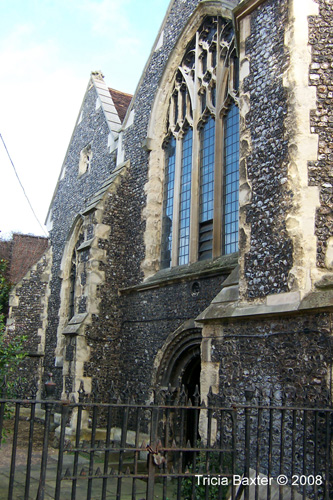
"A view of St. Margaret's Church"
"In St. Margaret's was interred the learned William Somner, the historian, and native of this city; his epitaph on a mural monument of white marble is as follows:
H.S.E.
Gulielmus Somnerus,
Cantuariensis,
Saxonicam Literaturam
Civitatis Cantuaria Historiam
(Tenebris utramque involutam)
Illustravit:
Cantii Antiquitates meditantem
Fatum intercepit.
Officium
Deum pietate severa
Homines probitate simplici,
Principem fide periculosa,
Patriam scriptis immortalibus
Indicavit.
Ita mores antiquos
Studium Antiquitaris efformat.
Natus est Mar. 30, 1606.
Omnem aetatem egit.
Obiit Martii 30, 1669.
*It was erected by Barbara his wife
In this Church, also, is a handsome monument in commemoration of Sir George Newman, LL.D. Commissary to the Archbishops Whitgift, Bancroft, and Abbot, and Judge of the Cinque Ports almost thirty years: he died at the age of sixty-five, in 1627."
Topographical, Historical, Descriptive, and Literary, Delineation's in Kent, E.W. Brayley, October, 1807 *1627 is correct - to see a view of his tomb go to the Canterbury Archaeological Trust Site
Marriage of John NEAME, parish of St. Margaret's, Canterbury and Elizabeth RIGDEN by Licence July 11, 1742
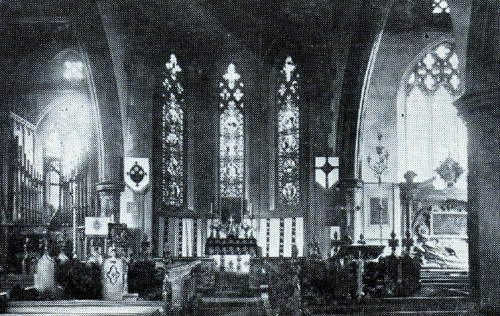
The very large memorial that you can see on the right hand side of the photo is of Sir George NEWMAN
(the monument is still there in the church behind the panelling) *at the head of the South Aisle - he died A.D. 1627
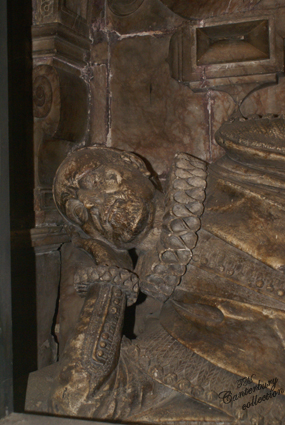 __
__
Sir George NEWMAN
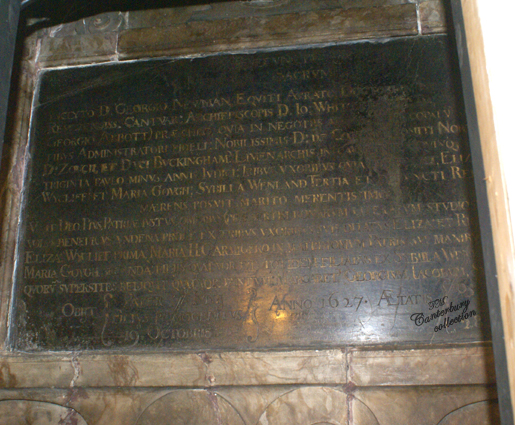

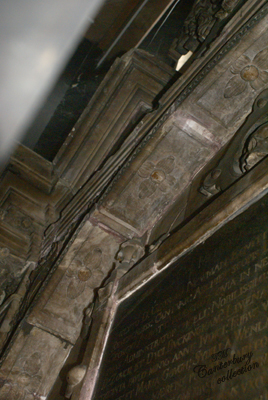 ___
___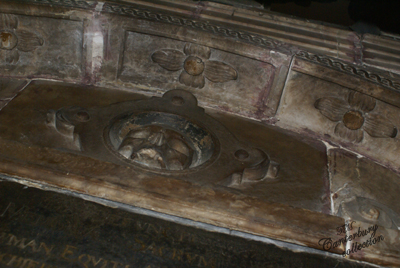
"St. Margaret's Church stands on the west side of St. Margaret's street. The east end of this church has been sliced off at an acute angle and made to accommodate itself to the direction of the street; it consists of nave and two aisles, with a square tower at the west end, having three bells. The interior is choked up with pews; and there is an ostentatious record that the church was "beautified" in 1831. John Wynter and Joan, his wife, gave a lamp to burn continually before the high altar of this church, to be supported by the rent of two tenements at "Yren Cross." The living originally belonged to the convent of St. Augustine, and afterwards to Poor Priests' Hospital. In 1586 it was given to the Archdeacon of Canterbury, and has since been under that patronage. It is endowed with 200 pound, Parliamentary grant."
Directory 1847
October 4th, 1851 - "The Builder", detailing work on the church
"...Modern restorations of brasses may be seen at St. John's Margate; St. Margaret's Canterbury....."
John Wynter, twice mayor, 1470, he ordained a light for the altar, inscr. restored (?), p. 53
A manual of monumental brasses
Marriage of John MacCracken of St. Margaret's Canterbury, Surgeon, Bachelor and Mary NEAME of the same, spinster age 30. December 30, 1815
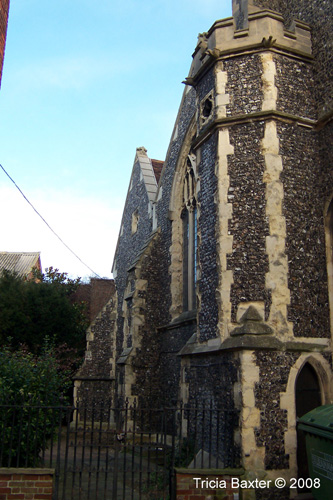
"A view of St. Margaret's Church from the rear"
"Marriage, September 4th, at St. Margaret's, Canterbury, Fred. T. CURTIS, esq., of Elmstone-court, to Mary, eldest dau. of James DELMAR, esq., Canterbury."
Gentlemen's Magazine 1861 *they lived at 11 St. Margaret's street in 1861, Mary's father James Delmar is a Brewer
"William A. Hales, Rector of St. Margaret's Canterbury, visiting with John Callaway, Solicitor at 43 St. Margaret's street (county court office), in Canterbury."
"The church of St. Margaret, situate in St. Margaret street, consists of apsidal chancel, nave and aisles, the north aisle projecting beyond the central apse and the south aisle retiring below it' this singular dis-arrangement was caused by the removal of a large south-eastern angle of the church to widen the street. The mutilated east end of the church was skilfully dealt with by the late Sir G. Gilbert Scott R.A. the east wall of the south aisle being set back and an apse added to the central aisle, as above mentioned: at the south-west angle is an embattled tower containing three bells; the eastern apse is filled with stained glass by Gerente and there are various other stained windows, one of which, in the north aisle, was erected by Mr. Wood in memory of his wife; in the north aisle is a mural tablet tot he celebrated Kentish antiquary, William Somner, who died March 30th, 1669, erected by Barbara, his widow and second wife: there are 400 sittings all free; the population is 575. The register dates from the year 1654. The living is a rectory, net year value £100, with residence, in the patronage of the Archdeacon of Canterbury and held by the Rev. Alleyne Ward Pearson M.A. Pembroke College, Cambridge." 1882
1891 - Marriage at St. Margaret's Church Canterbury, Sidney WACHER, FRCS, to Margaret Caroline, only daughter of the late George Royle FREND, of Canterbury.
"In the street of the same name, renovated, mutilated, and partially rebuilt. This church, with the exception of a monument to Sir George NEWMAN, erected in 1627, contains little of general interest."
Handbook for Canterbury, British Association for the Advancement of Science, Dover 1899
"The church of St. Margaret, in St. Margaret's street, is of stone in the Perpendicular style, and has a tower containing three bells; there are various stained windows and numerous monuments: the church affords 300 sittings." 1913
1986 the choir stalls, prayer desks and pews were given to St. Peter and St. Paul, Sutton by Dover
![]()
1673 - William Hawkins, Minister of the Parish of St. Margaret
1803 - The Rev. William Henry Champneys, M.A. late of Christ's College, succeeds the Rev. Mr. Wall in the livings of St. Margaret's, and of St. Mary Bredin, both in Canterbury
1822 - Ecclesiastical Preferments - N. Simons, rector of St. Margaret's Canterbury, to the rectory of Ickham; patron, The Archbishop of Canterbury
1842-4 - George Charles Pearson, rector of St. Margaret, Canterbury
1847 - Rev. Edward John Woodall is the rector
1858 - Thomas Goulden (professor of music) and organist of St. Margaret's
1858 - Rev. E. H. Woodhall *ceded it 1859?
1861 - William Atherstone Hales, Rector, wife Agnes Hales (staying with John Callaway, 43 St. Margaret's Street?) - Member of the Kent Archaeological Society 1860, St. Margaret's Street
1882 - Rev. Alleyne Ward Pearson M.A. Hours of Service; 11 am. 7 pm. Fri. 8:15 pm.
1898 - 1903 - Rev. Henry Day French M.A. (Of Emmanuel College, Cambridge and Rural Dean of Canterbury), Hours of Service: 8 & 11:00 am. & 7 pm.; Fri. 4:30 pm.; Saints' days 8:00 am. (Died 1910 Cranbrook, Kent) *Married 1898 Emily Maud Wightwick in Canterbury
1909 - 1913 Rev. William Grylls Watson M.A. of Keble College, Oxford. (The united livings form a rectory, net yearly value £240, with residence, in the gift of the Archbishop (two turns) and Archdeacon of Canterbury (one turn), and held since 1909 by the Rev. William Grylls Waston M.A.
Lovely site about the bells of the church at kent.lovesguide.com
Index of Wills
John LEAMAN, St. Margarett, Canterbury 1656 folio 21


